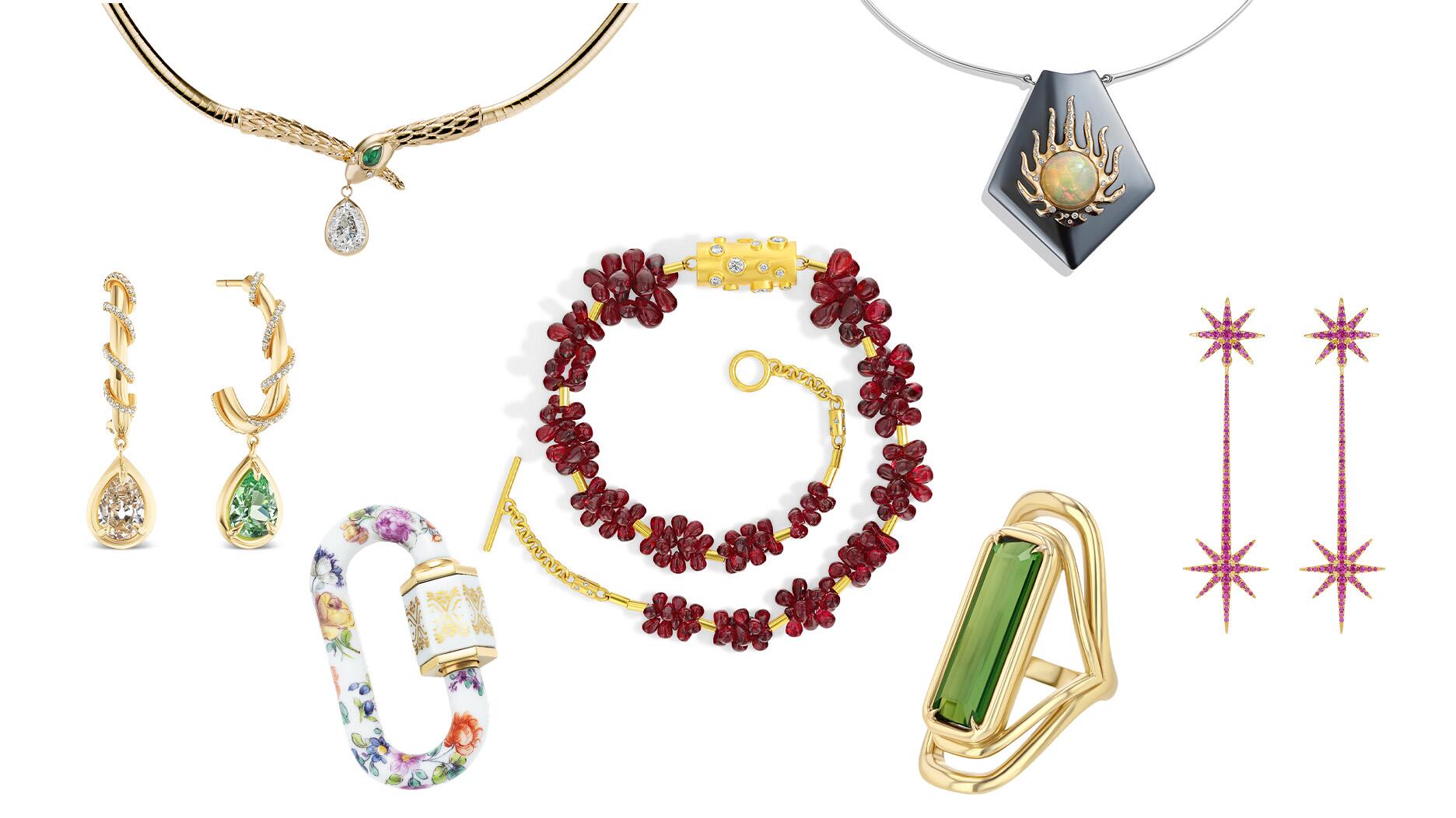It purchased the “Grosse Pièce,” an ultra-complicated Audemars Piguet pocket watch from the ‘20s, for a record-breaking price at Sotheby’s.
3 Retail Clichés for 2016
These expressions used to describe the current state of retail are so common they’ve become meaningless, even irritating. But you won’t quit hearing them, Editor-in-Chief Michelle Graff writes.
A few Sundays ago, I was riding back to New York with my brother and sister-in-law after spending Christmas in Pittsburgh with my family.
Of course, we had the Steelers game on the radio and even tuned in in time to catch a bit of the pre-game show on 102.5 WDVE. The topic of conversation was clichés, specifically those uttered in connection with this 2015 team, chief among them being that the boys in black and gold are the team that “nobody wants to see in the playoffs” this year.
Listening to the broadcast got me thinking about all the expressions that are used time and again, year after year, in headlines and stories relating to the retail industry, and what ones we will continue to come across in 2016.
I came up with a list of three, which are laid out below. (Programming note for any Bengals fans that might be reading this: There will only be two more Steelers references from this point on.)
1. Some retailers will continue “losing their sparkle.”
The Golden Globes took place Sunday night, the Oscar nods were announced Thursday and even Cincinnati Bengals cornerback Adam “Pacman” Jones got into the nomination action this week, suggesting that Steelers wide receiver Antonio Brown deserves a Grammy for allegedly acting like he was injured after Vontaze Burfict nearly decapitated him in last week’s wild-card game.
If Pacman can start putting visual performances up for awards that involve audio excellence, then I feel I can roll out at least one nomination of my own.
So, what deserves a nod in the category of “most over-used headline for a story covering the financials of any company that sells jewelry?” I nominate “losing their sparkle.”
Tiffany & Co. found itself the subject of quite a few diminishing sparkle-type headlines in 2015 but was certainly was not alone.
Though all the final figures are not in yet, it is known that Macy’s had a tough 2015 and Richemont reported “subdued” sales in the Americas at year’s end, particularly among its watch brands.
Increased competition, decreased discretionary dollars and changes in buying behavior (consumers are shopping from their smartphones and tablets now more than ever) mean that retail is only going to get tougher going forward.
So, what can jewelers do to compete?
I was discussing this topic, and retail in general, with Howard Feller recently. Feller
From his vantage point, he said he thinks the jewelers that will do well are ones with a strong bridal business and/or the right mix of brands on which they can make margins, generate a faster turn and create a point of differentiation for themselves that entices consumers to come into their store.
The stores that will continue to struggle, he said, will be the ones that are price-point driven, because they are just never going to beat the Internet at that game.
2. Retailers will remain “cautiously optimistic.”
I thought the proliferation of retail CEOs describing themselves as “cautiously optimistic” was a by-product of the most recent recession but Feller, who has been working in retail for well over 25 years, said he can’t remember a time when retailers weren’t this way.
And this year, “That trend will continue for sure,” he said.
There are different pressures and challenges in retail each year.
The squeeze on margins applied by the deflationary retail environment and the ever-increasing expectations of consumers will continue to be chief among the pressures both retailers, particularly brick-and-mortar retailers, and their vendors/suppliers face in 2016.
Contributing to the continued abundance of caution in the retail sector are geopolitical concerns—look at, for example, the impact the ISIS attacks in Paris had on the luxury sector there—and the upcoming presidential election in the United States, which is going to be interesting, to say the least.
Contributing to the optimism, meanwhile, are a relatively healthy labor market in the U.S., the recovery in the housing market, wages perking up, and low gas prices and interest rates.
3. Consumers will continue to seek out “experiences, not things.”
Consumers today simply don’t want to accumulate as many material possessions, which I think is due to the attitude and behaviors of the country’s two largest demographic groups: the baby boomers and their children, the millennials.
My mother is a baby boomer and what she and my father tell my brother and I before gift-giving occasions throughout the year is this: We don’t want any more stuff. Buy us gift certificates for the restaurants we like, or the golf course we go to all the time in Florida. Clear your calendars to come on vacation with us. But, please, no more things.
Their aversion to the accumulations of more “things” is due to the fact that they still live in the same house where my brother and I grew up but are looking to downsize, preferably to a house without any stairs. I think a lot of people around their age (my mother is 68 and my father is about to turn 72) feel the same way.
The millennials, on the other hand, have come of age in the sharing economy; owning as much stuff just isn’t necessary anymore. They no longer have to buy DVDs and CDs to watch movies at home or listen to music, own a car to have access to a vehicle, or buy a wedding or formal dress for a single occasion. They can stream, share or rent them.
They are happy to take advantage of these sharing opportunities, and who can blame them? They are a generation saddled with college debt in an economy with uncertain job prospects and a shrinking middle class.
All this being said, I think jewelry holds a bit of an edge over other “things” because of its value, both sentimental and real, and this isn’t entirely lost on either generation.
When I interviewed millennials for a story in our last digital magazine, I was actually surprised at how much they appreciated fine jewelry. Still, they don’t see a ton of advertising for it, don’t have as much discretionary income as past generations, and have a lot more options when it comes to where and what they can buy.
As for the baby boomers, I will speak here with authority on the one I know most intimately, my mother.
Though she shies away from accumulating more things, I still buy her jewelry and she never objects because she knows it is a present that will mean something long after she’s gone, just like her Terrible Towel.
The Latest

Sponsored by Digital Monitoring Products

The boutique is slated to open this week inside Terminal 8, offering pre-owned Rolex watches and more to international travelers.

How Jewelers of America’s 20 Under 40 are leading to ensure a brighter future for the jewelry industry.

The lab-grown diamond grower now offers custom engagement and fashion jewelry through its Kira Custom Lab Jewelry service.


The special-edition egg pendant ingested in a New Zealand jewelry store was recovered after a six-day wait.

The “Love and Desire” campaign is inspired by the magic that follows when one’s heart leads the way, said the brand.

Roseco’s 704-page catalog showcases new lab-grown diamonds, findings, tools & more—available in print or interactive digital editions.

Two awardees will receive free tuition for an educational course at the Swiss lab, with flights and lodging included.

Berta de Pablos-Barbier will replace Alexander Lacik at the start of January, two months earlier than expected.

Sotheby’s held its first two jewelry sales at the Breuer building last week, and they totaled nearly $44 million.

Winners will receive free registration and lodging for its fourth annual event in Detroit.

Here are six ideas for making more engaging content for Instagram Reels and TikTok, courtesy of Duvall O’Steen and Jen Cullen Williams.

The honorees include a notable jewelry brand, an industry veteran, and an independent retailer.

Carlos Jose Hernandez and Joshua Zuazo were sentenced to life without the possibility of parole in the 2024 murder of Hussein “Sam” Murray.

Yood will serve alongside Eduard Stefanescu, the sustainability manager for C.Hafner, a precious metals refiner in Germany.

The New Orleans jeweler is also hosting pop-up jewelry boutiques in New York City and Dallas.

Set in a Tiffany & Co. necklace, it sold for $4.2 million, the highest price and price per carat paid for a Paraíba tourmaline at auction.

The jeweler’s “Deep Freeze” display showcases its iconic jewelry designs frozen in a vintage icebox.

Take luxury gifting to new heights this holiday season with the jeweler’s showstopping 12-carat sphene ring.

This year's theme is “Unveiling the Depths of the Ocean.”

In its annual report, Pinterest noted an increase in searches for brooches, heirloom jewelry, and ‘80s luxury.

Starting Jan. 1, customers can request the service for opal, peridot, and demantoid garnet.

The 111-year-old retailer celebrated the opening of its new location in Salem, New Hampshire, which is its third store in the state.

The new catalog features its most popular chains as well as new styles.

The filmmaker’s personal F.P. Journe “FFC” prototype was the star of Phillips’ recent record-setting watch auction in New York.

The new location in the Design District pays homage to Miami’s Art Deco heritage and its connection to the ocean.


























